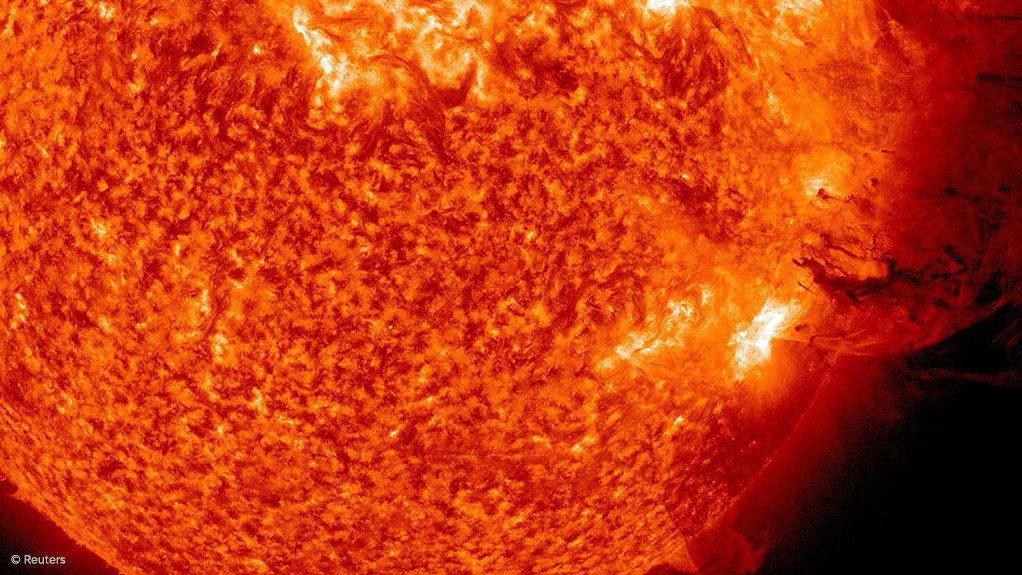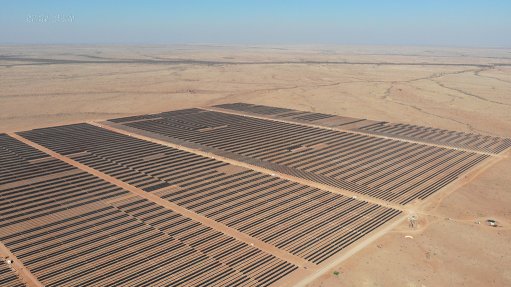SA must be more space weather aware
The dramatic advances in technology that have taken place over the past 20 years have made all countries, including South Africa, more vulnerable to space weather. Adverse space weather can disrupt satellite navigation systems (like GPS), satellite communications, long-range radio signals and even, in extreme cases, electrical transmission networks and long-distance pipeline systems.
As a result, the South African National Space Agency's (Sansa's) Space Science division, which is responsible for monitoring space weather (it operates the national Space Weather Centre), is now seeking to make local industry and government aware of the dangers posed by space weather. "We have ever greater dependence on technology systems," pointed out Sansa Space Science MD Dr Lee-Anne McKinnell at the Sansa Space Weather Information Day in Pretoria on Tuesday. "This technology infrastructure is vulnerable to space weather effects."
"Space weather refers to conditions on the Sun, the solar wind, magnetosphere, ionosphere and thermosphere that can influence the performance and reliability of space-based and ground-based technology systems," she explained. The areas of particular concern for South Africa are aviation, electrical power, satellite navigation, satellite operations and communications.
"We have designed our space weather programme around its relevance to the country," stated McKinnell. "We do constant monitoring of space weather, with a 24/7 on-call system. We also do an alert and warning system. We also interpret the data to obtain useful information. We provide an interpretation of this data. We can also do space weather training and needs analysis [for industry]. Our aim and our motto in our Space Weather Centre is to provide the right information in the right format, at the right time, to the right people."
The main space weather phenomena are solar flares, solar energetic particles (protons, electrons and helium ions) and Coronal Mass Ejections (CMEs). Solar flares can disrupt high frequency (HF) radio communications and satellite communications. They take eight minutes to reach Earth. Solar energetic particles can reach Earth in 15 minutes to a few hours, depending on their severity. With these, ionizing radiation penetrates the atmosphere, satellites can be damaged and HF communications are disrupted. They are dangerous for astronauts. CMEs take one to four days to reach the Earth. Most do not come towards Earth. Those that do are called Geo-effective and affect HF communications, satellite navigation systems, increase the drag on satellites (causing orbital decay) and generate auroras. CMEs also create Geomagnetically Induced Currents, which affect electrical power systems, oil pipelines and even undersea cables.
The purpose of the Space Weather Information Day was not only to brief government and industry about space weather and Sansa's capabilities, but also for Sansa to ascertain the needs of those departments and companies.
Comments
Press Office
Announcements
What's On
Subscribe to improve your user experience...
Option 1 (equivalent of R125 a month):
Receive a weekly copy of Creamer Media's Engineering News & Mining Weekly magazine
(print copy for those in South Africa and e-magazine for those outside of South Africa)
Receive daily email newsletters
Access to full search results
Access archive of magazine back copies
Access to Projects in Progress
Access to ONE Research Report of your choice in PDF format
Option 2 (equivalent of R375 a month):
All benefits from Option 1
PLUS
Access to Creamer Media's Research Channel Africa for ALL Research Reports, in PDF format, on various industrial and mining sectors
including Electricity; Water; Energy Transition; Hydrogen; Roads, Rail and Ports; Coal; Gold; Platinum; Battery Metals; etc.
Already a subscriber?
Forgotten your password?
Receive weekly copy of Creamer Media's Engineering News & Mining Weekly magazine (print copy for those in South Africa and e-magazine for those outside of South Africa)
➕
Recieve daily email newsletters
➕
Access to full search results
➕
Access archive of magazine back copies
➕
Access to Projects in Progress
➕
Access to ONE Research Report of your choice in PDF format
RESEARCH CHANNEL AFRICA
R4500 (equivalent of R375 a month)
SUBSCRIBEAll benefits from Option 1
➕
Access to Creamer Media's Research Channel Africa for ALL Research Reports on various industrial and mining sectors, in PDF format, including on:
Electricity
➕
Water
➕
Energy Transition
➕
Hydrogen
➕
Roads, Rail and Ports
➕
Coal
➕
Gold
➕
Platinum
➕
Battery Metals
➕
etc.
Receive all benefits from Option 1 or Option 2 delivered to numerous people at your company
➕
Multiple User names and Passwords for simultaneous log-ins
➕
Intranet integration access to all in your organisation





















